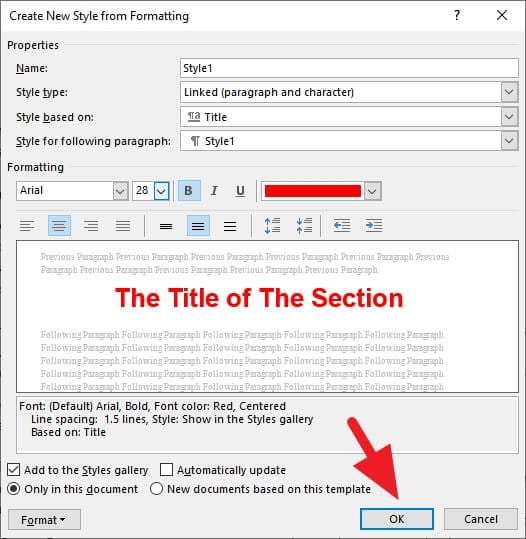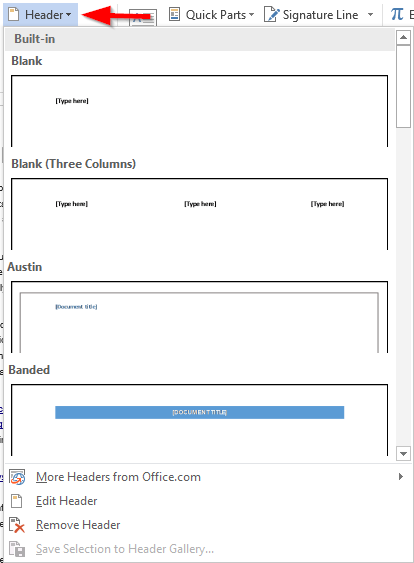

- How to add headings in microsoft word 2016 how to#
- How to add headings in microsoft word 2016 update#
If you ever need to add or remove a section from your document, you can easily update the table of contents to reflect those changes. In the Table of Contents Options window, next to each available style you want to use (these are Word’s built-in styles starting with Heading 4), type the TOC level you wish to use. In the Table of Contents window that opens, click the “Options” button. On the dropdown menu when you click the “Table of Contents” button, choose the “Custom Table of Contents” option. If you want your table of contents to go deeper than the top three heading styles, you can do that, too. So if you use the automatic table and you want sub-levels in your ToC, you will need to use heading 1 for level 1, heading 2 for level 2, and heading 3 for level 3. Each level represents a heading style in your document. You may notice in this table of contents that there are sub-levels. If you chose the “Manual Table” option from the “Table of Contents” drop-down menu, then it will insert a template for you that you will need to edit yourself. Selecting either Automatic Table 1 or 2 will create the table of contents using the names of the headings. The only difference between Automatic Table 1 and 2 is the title, which is “Contents” and “Table of Contents,” respectively. Here, you can choose between the three different built-in tables. Once ready, head over to the “References” tab and select “Table of Contents.”Ī drop-down menu will appear. The first thing you need to do is put the cursor where you want the table of contents to appear. Once you’ve applied your heading styles, it’s time to insert your table of contents. You can either apply the heading styles to each section after you’ve finished the document, or you can add them as you go. You can manage this in two different ways. If you’re not happy with the types of heading styles available, you can change the default heading style. In addition to making the document more reader-friendly, a table of contents also makes it easier for the author to go back and add or remove content if necessary.īy default, Word generates a table of contents using the first three built-in heading styles (Heading 1, Heading 2, and Heading 3). To apply heading styles, select the particular style from the “Home” tab.

Microsoft Office 365 ProPlus Greek (284)Įnter your email address to subscribe to this blog and receive notifications of new posts by email.Regardless of the size of your document, using a table of contents can direct the reader to exactly where they need to be.Microsoft Office 365 ProPlus English (283).

How to add headings in microsoft word 2016 how to#
If we make any changes in our Index, and we want to update it with the latest information, all we have to do is to select the Update Index command which is located in the corner of the Index area of the Reference tab as shown in the image below.īelow you can check out the video describing on How To Create An Index in a Word 2016 Document.

In the image below I have only created one Entry so the Index just shows this Entry. Once finished the Index is inserted as shown in the image below. Once finished with the adjustments we press the Ok button for them to take place. We can select what Type of Index we want, we can select the number of Columns, the Language, we can Right Align the Page Numbers and we can also select the sort of Format we need for our Index. While doing all the settings, we have also a Preview of the Index that we will be inserted in our document. Immediately the Index dialog box, appears where we can do all the settings needed. We move our cursor to the point that we want our Index to be inserted and then from the Reference tab and from the area of the ribbon named Index we select the command Insert Index, as shown in the image below. Once we have created as many Entries that we need, it is time to create the Index. Once we press the OK button, at the right that we had placed our cursor we notice something as shown in the image below. All we have to do, is to do all the settings that we want in the Main Index Entry dialog box and then press OK for all the settings to take place.


 0 kommentar(er)
0 kommentar(er)
